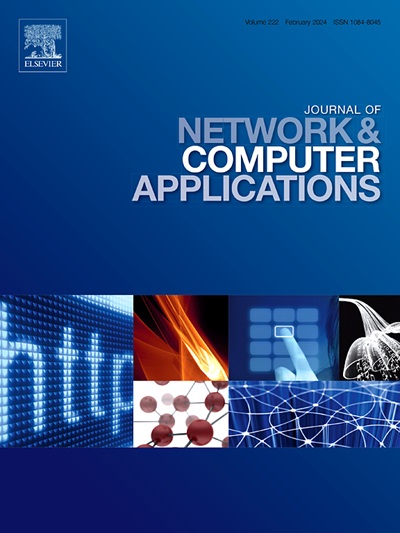Real-time tracking railway intruders using multiple-agent cooperated large language models with edge stream processing engine
IF 8
2区 计算机科学
Q1 COMPUTER SCIENCE, HARDWARE & ARCHITECTURE
引用次数: 0
Abstract
Tracking intruders is crucial for ensuring safe railway operations globally, particularly in high-speed railway systems. Traditional methods either rely on post-processing on cloud platforms or suffer from limited analytical capabilities on edge devices. Although large language models (LLMs) have shown great potential to support general intelligence, challenges remain for edge devices in accurately and timely tracking of intruders along railway lines. This study proposes a novel method that combines a multi-agent cooperative framework (MetaGPT) with an edge stream processing engine (GeoEkuiper). Unlike most methods, this study adopts an agent-cooperative spatial data analysis approach employing a debate-and-vote strategy. Specifically, GeoEkuiper is responsible for processing high-speed and large volume of geospatial data streams regarding location history and object characteristics, while the modified MetaGPT framework facilitates information sharing and decision-making between agents that use LLMs. By enabling each edge device to engage in a debate about the presence of detected targets within their monitoring areas, the system utilizes a simple voting agent to determine which devices are most likely to observe the target. Considering the resource limitations of edge devices, we fine-tuned small yet powerful LLMs to direct GeoEkuiper to iteratively compute spatial affinity relationships using Structured Query Language (SQL) statements, which facilitate human-edge interaction. Based on tests conducted on resource-constrained edge devices such as Raspberry Pi devices interconnected in an unstable networking environment, we found that this approach significantly enhances the accuracy and responsiveness of intruder tracking in real-time scenarios, providing a robust solution for railway security applications.

基于边缘流处理引擎的多智能体协同大语言模型实时跟踪铁路入侵者
追踪入侵者对于确保全球铁路安全运营至关重要,特别是在高速铁路系统中。传统方法要么依赖于云平台上的后处理,要么受制于边缘设备上有限的分析能力。尽管大型语言模型(llm)已经显示出支持通用智能的巨大潜力,但边缘设备在准确及时地跟踪铁路线上的入侵者方面仍然存在挑战。本研究提出了一种将多智能体协作框架(MetaGPT)与边缘流处理引擎(GeoEkuiper)相结合的新方法。与大多数方法不同,本研究采用采用辩论-投票策略的代理-合作空间数据分析方法。具体来说,GeoEkuiper负责处理关于位置历史和目标特征的高速和大量地理空间数据流,而修改后的MetaGPT框架促进了使用llm的代理之间的信息共享和决策。通过使每个边缘设备参与关于其监测区域内检测到目标的存在的辩论,系统利用一个简单的投票代理来确定哪些设备最有可能观察到目标。考虑到边缘设备的资源限制,我们对小型但功能强大的llm进行了微调,以指导GeoEkuiper使用结构化查询语言(SQL)语句迭代计算空间亲和关系,从而促进人类与边缘的交互。通过对资源受限的边缘设备(如在不稳定网络环境中互联的树莓派设备)进行测试,我们发现该方法显著提高了实时场景下入侵者跟踪的准确性和响应性,为铁路安全应用提供了强大的解决方案。
本文章由计算机程序翻译,如有差异,请以英文原文为准。
求助全文
约1分钟内获得全文
求助全文
来源期刊

Journal of Network and Computer Applications
工程技术-计算机:跨学科应用
CiteScore
21.50
自引率
3.40%
发文量
142
审稿时长
37 days
期刊介绍:
The Journal of Network and Computer Applications welcomes research contributions, surveys, and notes in all areas relating to computer networks and applications thereof. Sample topics include new design techniques, interesting or novel applications, components or standards; computer networks with tools such as WWW; emerging standards for internet protocols; Wireless networks; Mobile Computing; emerging computing models such as cloud computing, grid computing; applications of networked systems for remote collaboration and telemedicine, etc. The journal is abstracted and indexed in Scopus, Engineering Index, Web of Science, Science Citation Index Expanded and INSPEC.
 求助内容:
求助内容: 应助结果提醒方式:
应助结果提醒方式:


